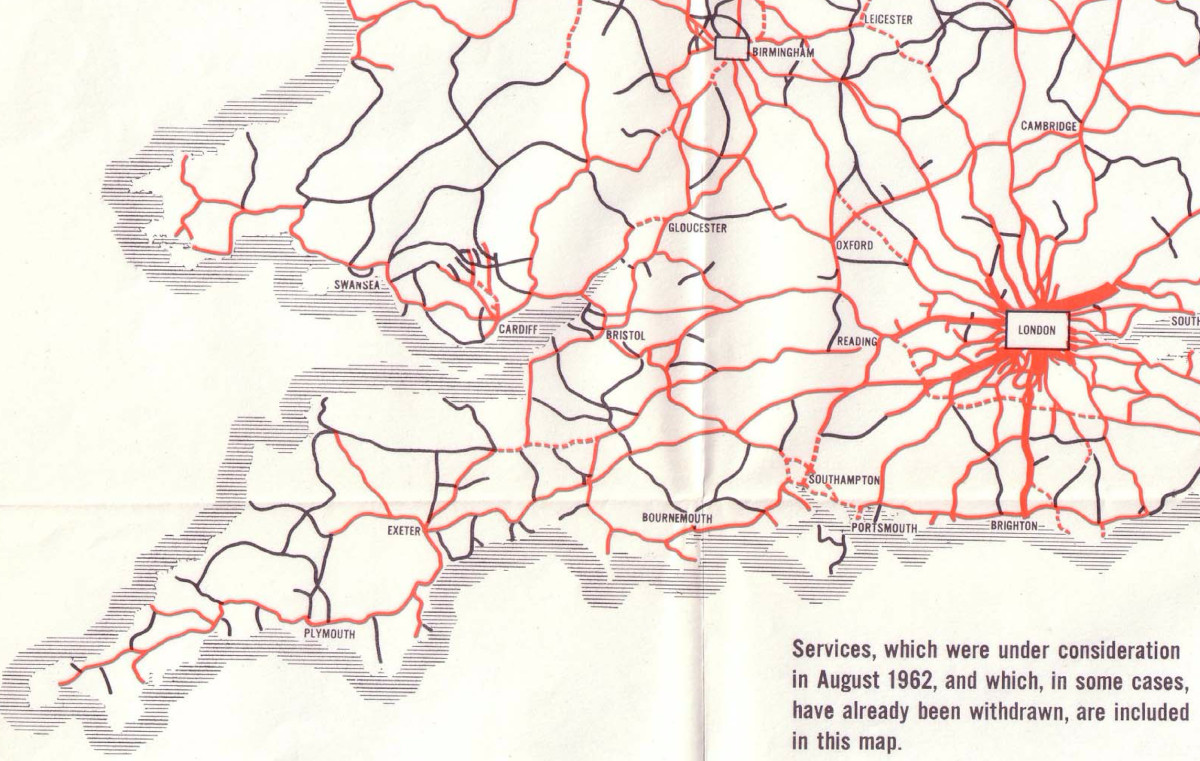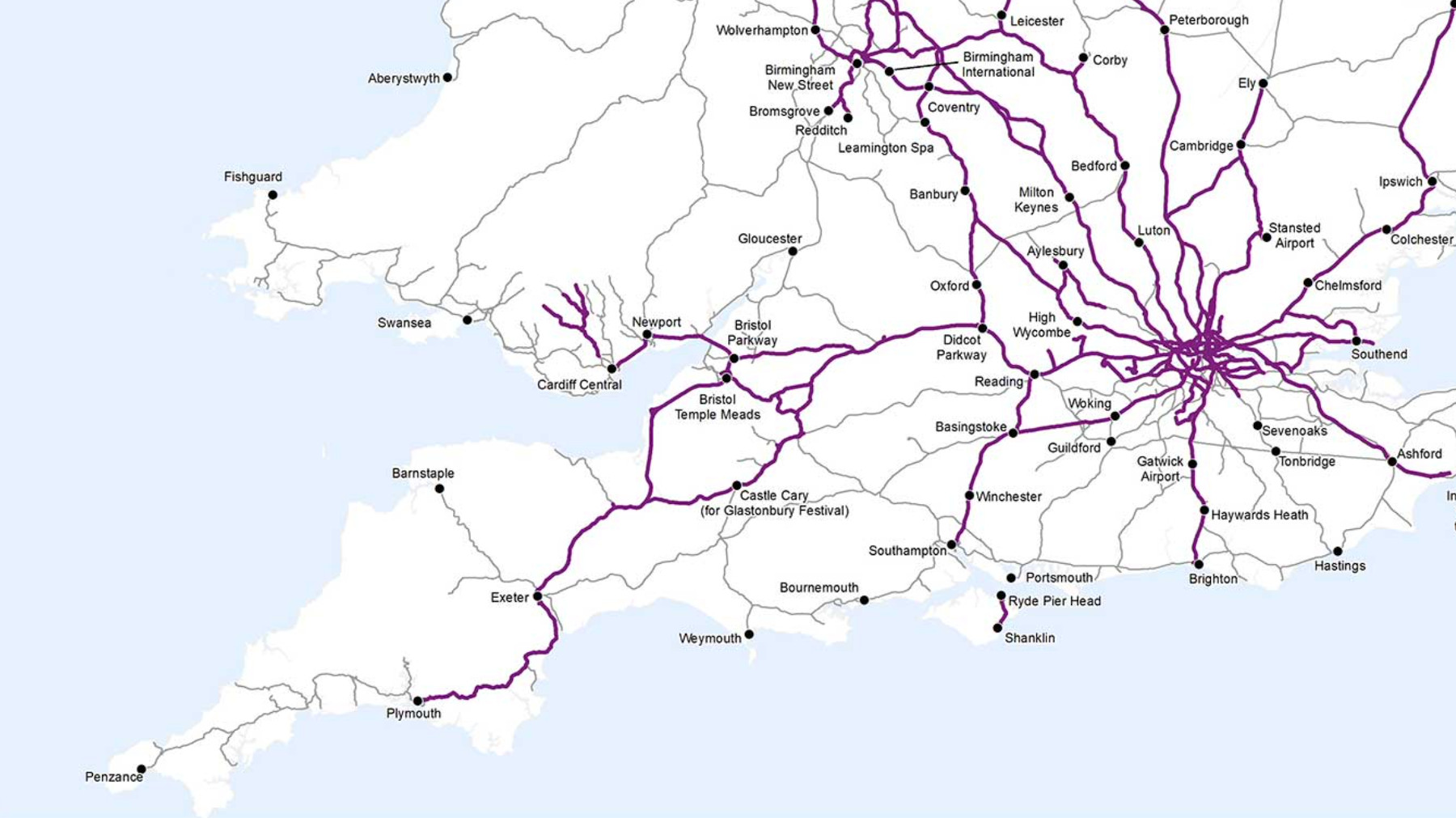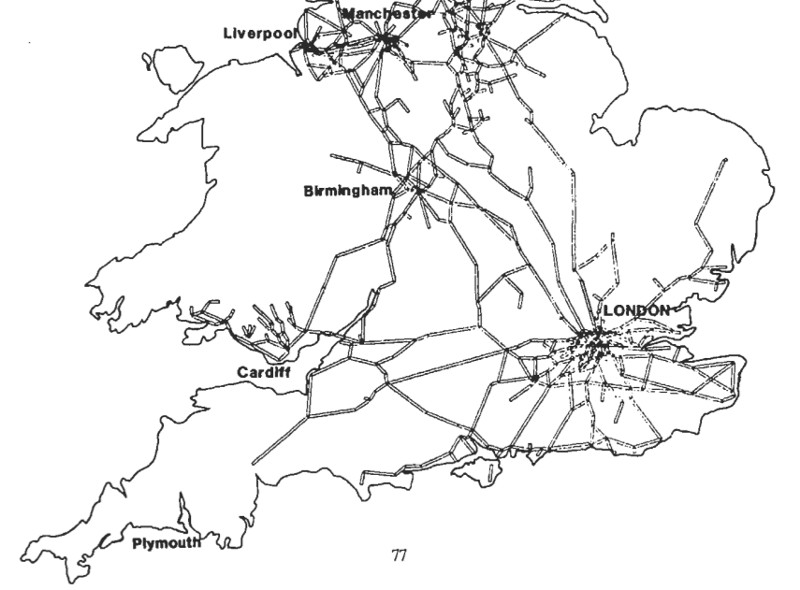| Re: Does anyone else feel an unease at a pattern? Posted by broadgage at 13:13, 16th June 2022 |     |
Yes I do feel slight unease.
I doubt that we will see large scale complete closures, but I DO see the beginnings of a two tier railway.
"Core routes" that must be kept open if at all possible.
And "Secondary routes" that are a lower priority, and can be closed first not just in strikes, but then in bad weather, or in a fuel shortage, or perhaps closed at the less busy times of year.
| Re: Does anyone else feel an unease at a pattern? Posted by stuving at 11:00, 16th June 2022 |     |
Is it just me, or do others too see similarities between the Network Rails maps for next week and the maps we see in old reports such as "Beeching" and "Serpell"?
Can you think of any reason why the answer to the question "which are the key routes to keep open, including for goods traffic, if most of the network has to be closed down for a few days?" would be different to the answer to the question "which are the key routes to keep open, including for goods traffic, if most of the network has to be closed down permanently? The concentration of signalling on those main routes, so that fewer staff are needed, just makes the second question worth asking now (TSSA members permitting).
| Re: Does anyone else feel an unease at a pattern? Posted by Electric train at 08:48, 16th June 2022 |     |
Is it just me, or do others too see similarities between the Network Rails maps for next week and the maps we see in old reports such as "Beeching" and "Serpell"?
Isn’t it just that the busier routes tend to have the most modern signalling and are therefore easier to operate with fewer staff?
Or putting it another way - has the investment been on those routes, with the other routes being starved of parallel investment and now behind the times and hard to sustain.
The key strategic routes have not changed much over the decades, and yes investment does have a hierarchy based on key routes.
For the industrial action contingency planning point of view the primary and key routes will be the ones with centralised signalling centres anything that relies on older manual boxes or even some older Power Signal Boxes are difficult to staff
| Re: Does anyone else feel an unease at a pattern? Posted by grahame at 08:24, 16th June 2022 |     |
Isn’t it just that the busier routes tend to have the most modern signalling and are therefore easier to operate with fewer staff?
Or putting it another way - has the investment been on those routes, with the other routes being starved of parallel investment and now behind the times and hard to sustain.
| Re: Does anyone else feel an unease at a pattern? Posted by Red Squirrel at 08:15, 16th June 2022 |     |
Isn’t it just that the busier routes tend to have the most modern signalling and are therefore easier to operate with fewer staff?
| Does anyone else feel an unease at a pattern? Posted by grahame at 07:43, 16th June 2022 |     |
Network Rail have produced this map showing the lines they will be able to open, presumably using the few non-striking staff capable of working as signallers.
I have mirrored the map at
http://www.wellho.net/pix/Map-showing-open-lines-during-strike-days-June-2022.jpg
in case Network Rail take it down at some point in the future
Is it just me, or do others too see similarities between the Network Rails maps for next week and the maps we see in old reports such as "Beeching" and "Serpell"?













